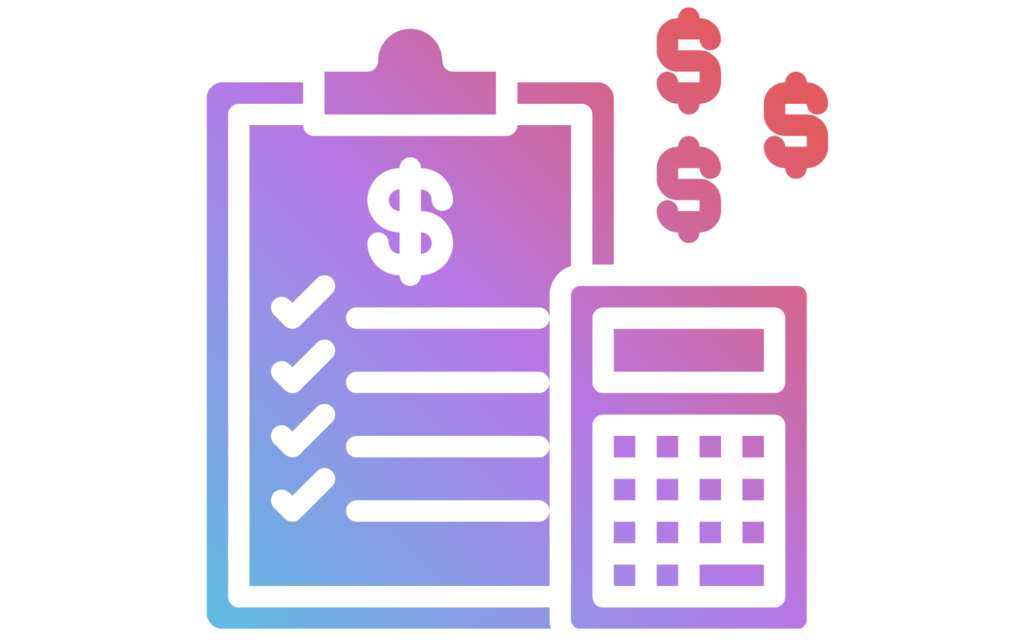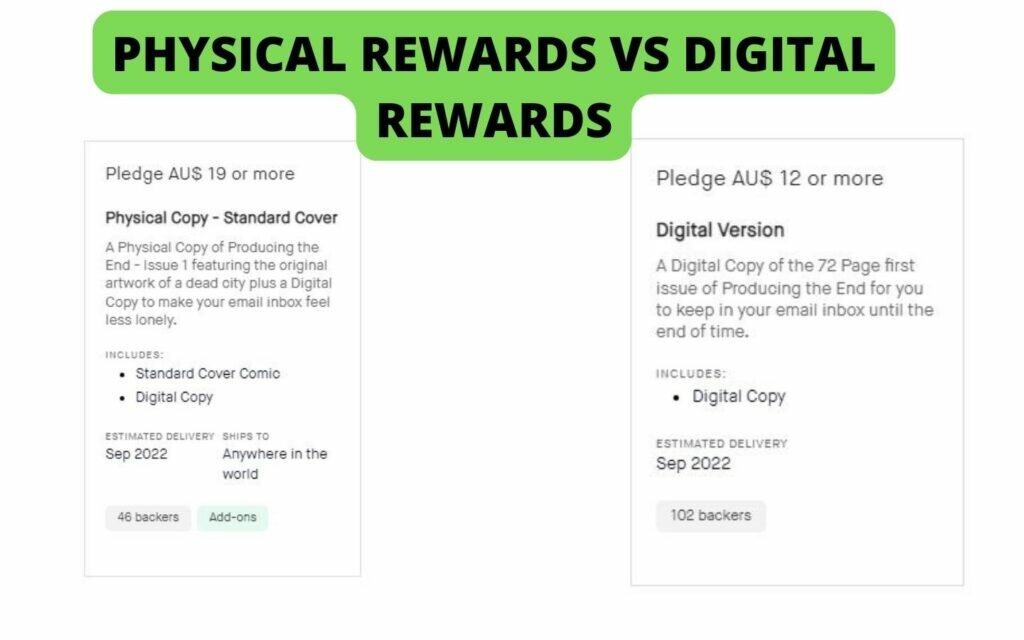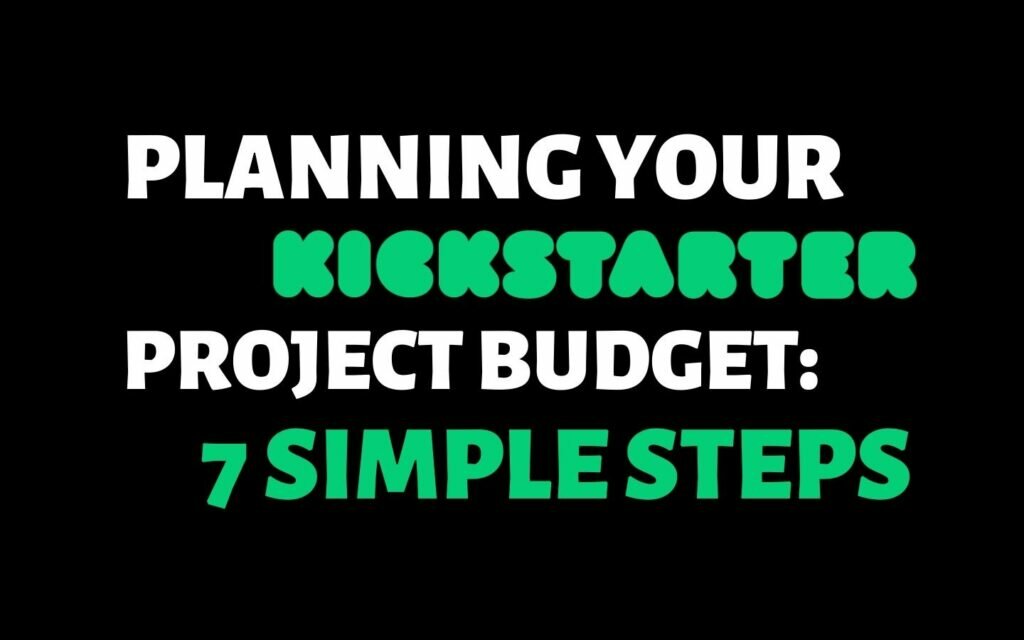Starting a new project can seem a bit daunting. Whether it’s writing a piece of music, creating a graphic novel or starting a new podcast – starting a new kickstarter project comes with its own costs. Startup costs, ongoing costs, even staff costs in the long term. Not to mention the overall anxiety of research the DO’s and DONT’S of Kickstarter.
I’ve been writing and editing this blog for over 4 years now and Project Managed several kickstarter campaigns so I’ve come across many pitfalls when it comes to running a Pop Culture Project. With these pain points in mind, I’ve put together some handy tips to consider when planning your next project’s kickstarter budget.
Plan Your Kickstarter Project

It sounds obvious, doesn’t if? However, you’d be surprised how many great ideas or plans get put into practice without thinking about the actuality or feasibility in starting a new project. Planning your project can mean the difference between a short lived passion projects and a well thought out project that leads you to eventually quitting your day job.
First, think to yourself before you do anything: “What do I want to achieve from this project?” Then write it down. Writing down your ideas can help you structure your ideas better and formulate them into a cohesive plan on what your project can be.
Second, think to yourself “who is my audience going to be” or better yet “who is going to benefit or enjoy my project?” Defining your audience or demographic can be a defining moment in your plans to start a new project. In sales and marketing, it’s referred to as defining the industry vertical or cross market analysis. Simply put, ask yourself “who is going to like my thing or my creation?”
The best kinds of projects and creative ideas are the ones that change lives or who benefit people. If you’re starting to brainstorm on “what key takeaways would a prospective supporter take from my project” then you’re already on your way to creating a rock solid plan and, more importantly, planning your next project effectively.
How much do you want to spend on your next Kickstarter Project?
via GIPHY
This is a point that isn’t asked enough of new content creators and I feel like it really needs to be addressed. No matter what your project is. Whether it’s a graphic novel, writing a song or recording an album – you must figure out and ask yourself “how much do I want to spend on X project?”
Now that’s you’ve defined how much you want to spend on your project – do a bit of research. It’s all well and good to say you only want to spend $500 on creating your first Graphic Novel or $1000 in a studio recording your first album – but is that realistic?
Social Media sites like Twitter, Reddit and Facebook are fantastic resources for asking pros and amateurs about creating a new project within their industry. While there are some out there who won’t be as forthcoming with certain information, I think you’ll find, for the most part that plenty are willing to help and to support you. In fact, my Discord Channel is filled with 300 different creators who talk regularly about the pitfalls of being a content creator.
Once you’ve come up with a comfortably number of how much you’re willing to spend up to – take 20% off that number. Why you might ask? Well, chances are you will need to hire a few collaborators along the way in your project creation journey. While it’s great to offer how much you’re willing to spend during your first initial discussion with your
Research Costs
via GIPHY
I mentioned “Kickstarter Project Research” briefly in the above point but let’s repeat that again: RESEARCH, RESEARCH, RESEARCH.
Research the funds that are going into your Kickstarter project as well as the funds that are going out of it. What I mean by that is consider all the costs where possible. Research how much printing your next comic will cost or the director’s daily rate for your next film or maybe even an hour or two will a record producer for your EP. This can be an absolute game changer.
Especially, if you shop around. While I always advocate for supporting the local business owner, such as Joe Blog’s Comic Printing business down the street, you must always look after numero uno first. In some cases, you might even be able to negotiate some of the fees if it means that local business owner is going to win your business. You never know until you ask.
Look at Kickstarter Backer Tiers
via GIPHY
Kickstarter launched back in 2009, since then there have been thousands of projects successfully brought to life. But how does that help you? Thankfully, those Kickstarters that launched in those early days have laid down the foundation of how to structure a successful campaign. Call it the Kickstarter blueprint, if you will.
One specific task that can seem quite daunting until you break it down is Kickstarter Tiers. In layman’s terms, Kickstarter tiers are the amount you’re supporting the project for and in return the supporter will receive a kickback or reward. With comics, it can be in the form of an exclusive variant cover. With film, it could be your name in the credits as an executive producer. With albums or EPs, your name could be in the liner notes. The options are endless.
However, the biggest question around Kickstarter Tiers that I often get is: What is a reasonable amount to charge for a specific tier. The short answer is, there is no right or wrong answer, but this is where your research comes to play. If you’re looking to raise money to create a Film then look at previous Film Kickstarters. If you’re looking to raise money to create a Book then look at previous Book Kickstarters.
Those previous Kickstarter campaigns have laid down the blueprint. All you need to do is follow and come up with a reasonable price to lure in those pledges. If they’ve been successful then it’s reasonable to assume you will also enjoy a similar level of success.
Physical Rewards vs Digital Rewards
I don’t see much discussion online around Physical Rewards vs Digital Rewards. The pro’s, the con’s, etc. There has been talk about Digital Rewards becoming more of an option for international backers, as no postage is involved, with projects like Film, TV, Books and Comic Books. However, if you’re more on the “no, I want to do physical rewards” only then I’m going to spend the last part of this article explaining why you should change that mindset.
Changing the Physical Rewards Mindset
Let’s take a comic book for example. A comic book, on average, usually has a Kickstarter campaign goal of between $2000-4000. The idea of that Kickstarter is usually to pay for the artists involved and pay for the printing. So on one hand, what if you did only physical? Suddenly, your production costs would escalate and you would be limited on potential revenue to fall back on, right? This could also mean you would limit your potential Kickstarter audience to only your immediate country. All of which is counterproductive when Kickstarter has thousands of worldwide users.
So I want you to start looking at Digital Rewards (see screenshot below) not only as a means to skip the printing and postage costs but also as a way to help offset your overall project costs. Think of it is this way. If you had $2000 in Kickstarter backers and all of that money is reserved for printing and postage then what happens if you need to pay your artist? Or pay for your time?

Having an additional revenue stream in digital backers can and will help offset the other costs that are keeping you up at night. This also gives your backers a perceived value proposition as digital rewards are usually the cheaper option. Not to mention, you can be quite creative when it comes to digital rewards as there are so many digital add-ons you can throw in without breaking the bank.
Don’t assume that everyone wants a physical product. Maybe they prefer to read your comic book on their iPad on the train or maybe they just don’t have room for additional comics in the garage? There are Kickstarter supporters out there who value Digital over Physical and vice versa.
From a cold hard cash perspective, Digital Rewards can potentially boost your project by an additional 20-30% and significantly boost you towards hitting your project budget. Just imagine what that can for your Kickstarter campaign. You don’t want to miss out on getting your project funded if you only made 94% or 97% of your goal.
Establish a Marketing Budget
via GIPHY
I would highly recommend establishing a Marketing Budget at some point before you launch. There are many options out there on the Marketing front from PR and Marketing agencies to Email List Marketing companies. Not to mention the usual marketing avenues such as Facebook ads, Instagram, TikTok, etc.
So what is a good Marketing Budget amount? The answer is there is no wrong or right answer. You might even establish early on in the Kickstarter discussion that you don’t need a Marketing Budget. However, if you made an arbitrary decision to spend no more than 5-10% of your overall Kickstarter goal then I think that’s a wise move.
Kickstarter Fulfilment
via GIPHY
There is no dancing around this topic: Kickstarter Fulfilment is an absolute bastard. Especially, if you get into the neighbourhood of several hundred backers who have pledged to receive physical campaigns. There are some companies out there who have been so successful at Kickstarter that they’ve managed to build an entire business model around this and so they have one or two staff where their job is to handle Kickstarter fulfilment. Ghostfire Gaming and Coffin Comics are prime examples of this.
If you’re new to this Kickstarter then chances are you’re not in this position so you have two options:
- Hire a printing/fulfilment company who has experience in this area. In a lot of cases they can print, box your item and post it without any issues.
- Handle the fulfilment yourself. This can be a costly exercise; both in terms of time and fees. For instance, posting yourself can be more expensive than a company who has an existing relationship with a postal courier service.
Regardless of which option you go with it is fundamentally important you do research to determine your postage budget. Last thing you want is to need to contact each backer individually and explain the postage is going to be more expensive than originally promised.
What did you think of this Kickstarter Article?
What did you think of this Kickstarter Article? I’d like to know if this has helped you in planning your Kickstarter Campaign? Let us know on social media.










